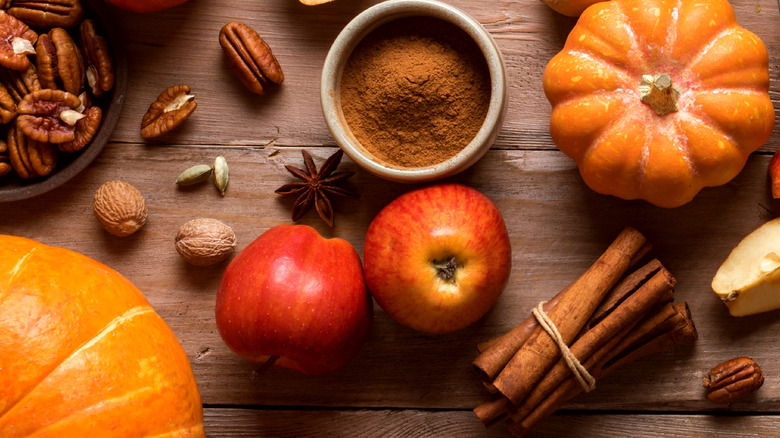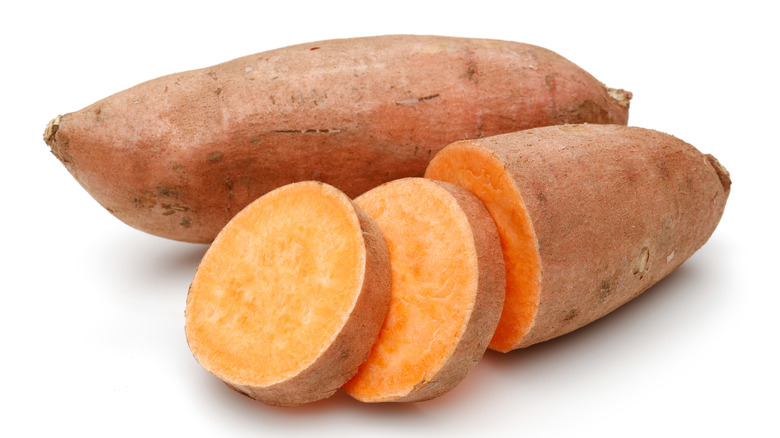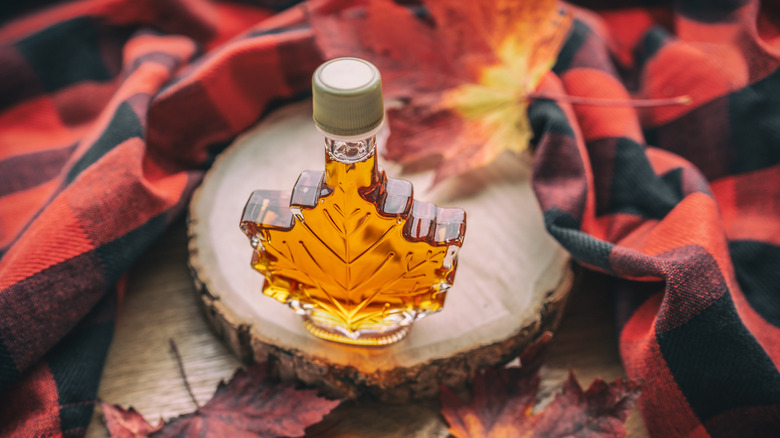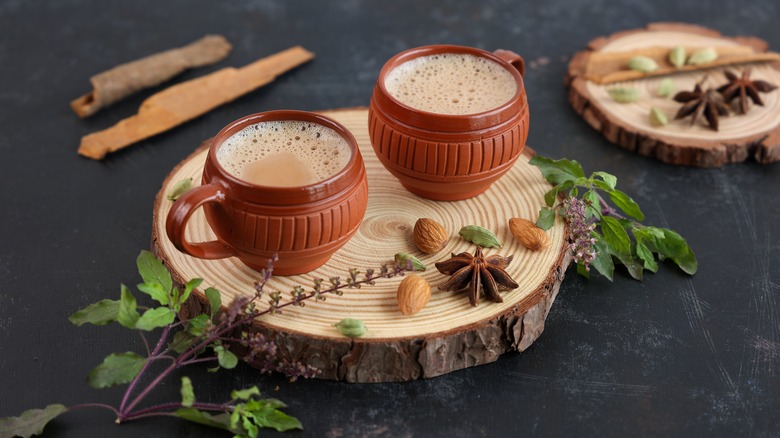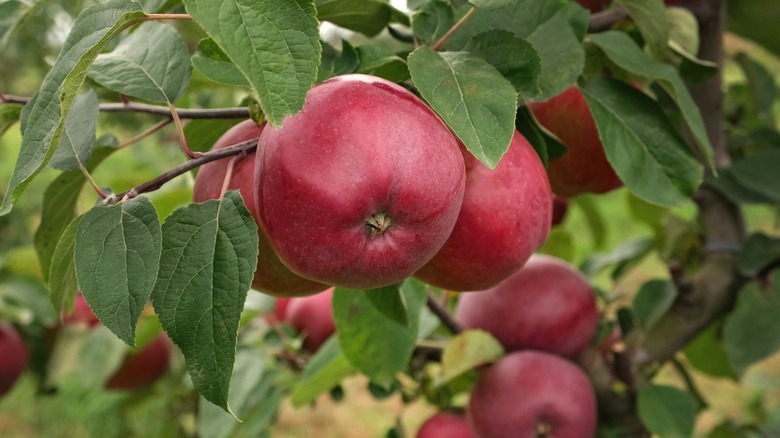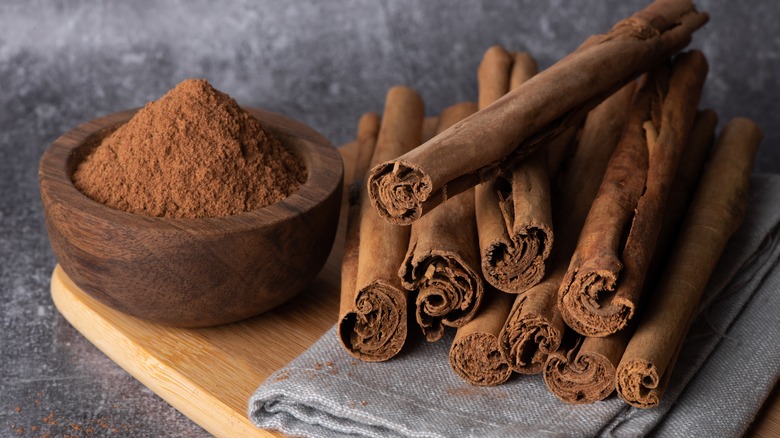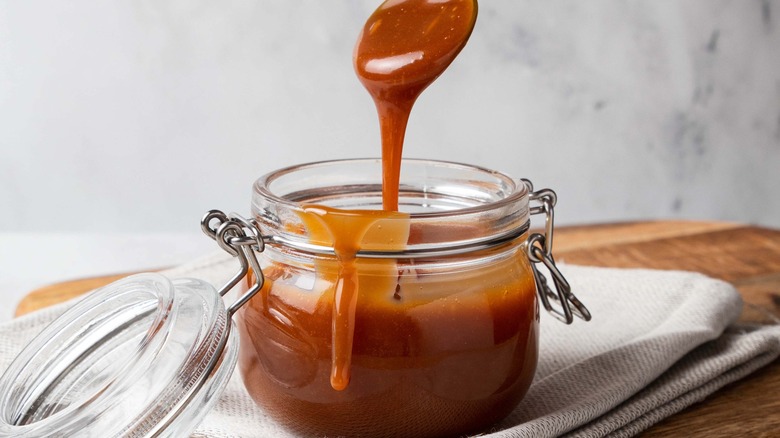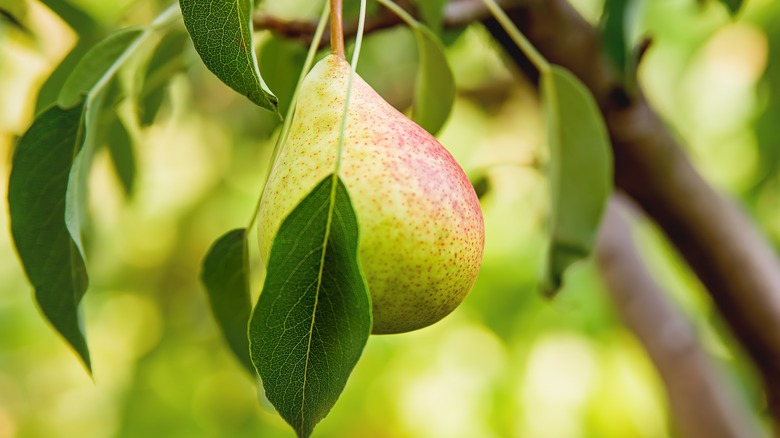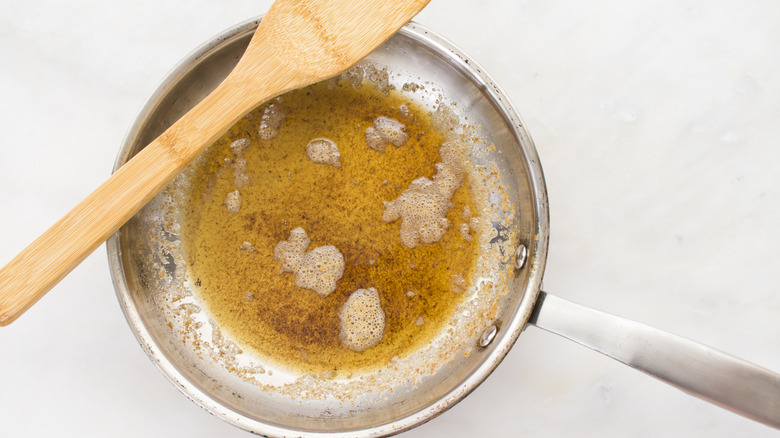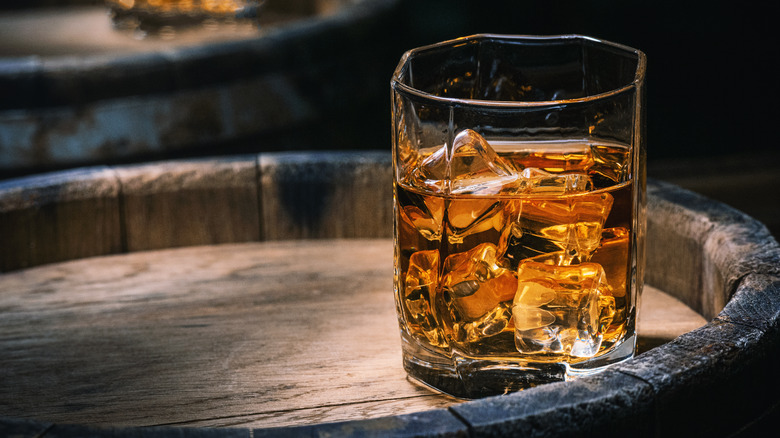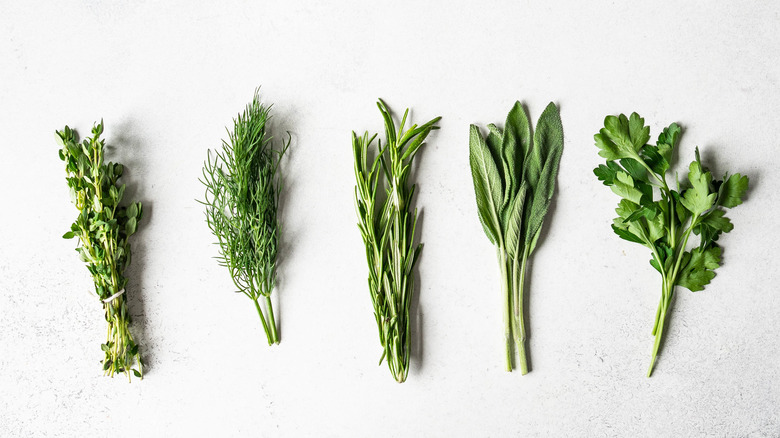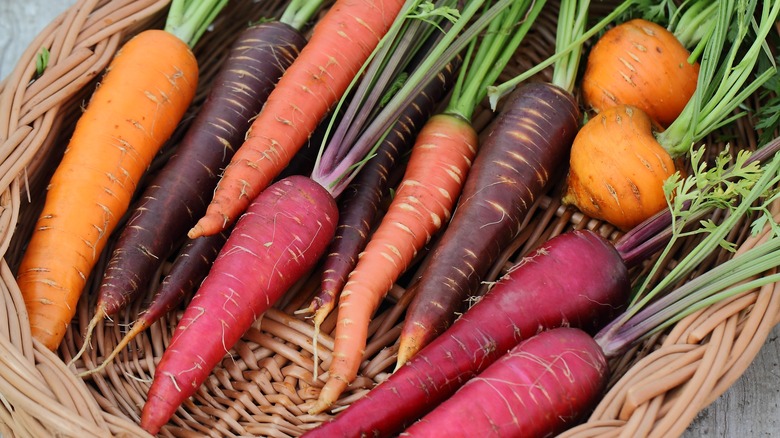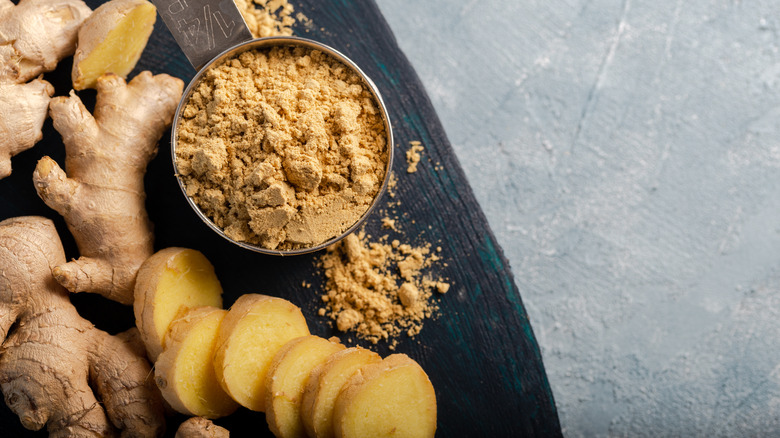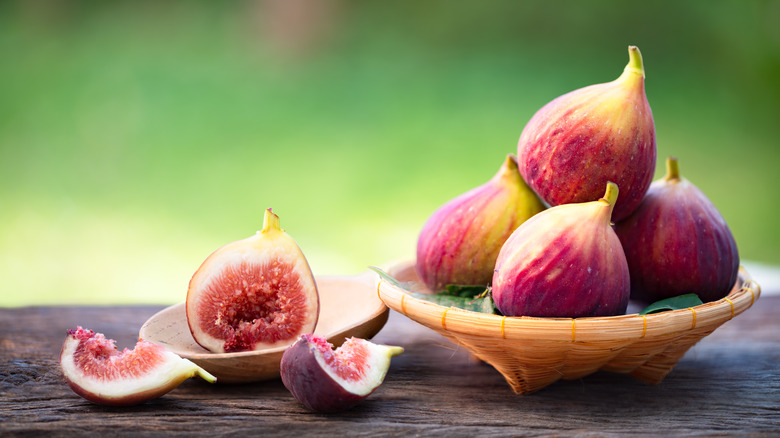These Non-Pumpkin Spice Autumn Flavors Will Take Your Fall To Another Dimension
We may receive a commission on purchases made from links.
During fall, pumpkin spice takes over the hearts and tastebuds of the world. The pumpkin spice flavor has been around for a long time, according to Webstaurant. In the '50s, spice brands like McCormick started packaging and selling pumpkin spice blends with cinnamon, nutmeg, clove, and ginger. In 2003, Starbucks launched its Pumpkin Spice Latte, which became the dominant flavor for fall. Starbucks' mix also includes pumpkin flavor in it. According to CNBC, the latte was a stunning success, becoming one of the brand's most popular options and selling over 600 million lattes since then.
The flavor's popularity has only continued to grow, with other companies bringing out pumpkin spice items such as donuts and candles. Unfortunately, with so many pumpkin spice offerings, it has become a bit tired and, dare we say, overdone. That is why we have compiled a list of non-pumpkin spice flavors that will take your fall into another dimension.
Sweet potato
Who needs a pumpkin when you can have a sweet potato? Sweet potatoes can be used in much the same way, but many people think the taste is better in almost every respect. According to Food Print, sweet potatoes come into season in the United States between September and October. They are traditionally orange, which is incredibly reminiscent of pumpkins, but can also come in colors such as red and purple.
Far more festive than its pumpkin counterpart, sweet potatoes are often paired with similar spices. They can be roasted, grilled, or puréed and used much the same way as pumpkins, but with some added benefits. According to Prevention, sweet potato contains more beta carotene, vitamins A and C, and fiber than pumpkin. Plus, on the taste front, sweet potatoes are, as the name suggests, sweet.
In addition to all these great benefits, the sweet potato makes an excellent pumpkin pie alternative. Sweet potato pie is more common in the southern United States but deserves more recognition. It is easy to make and can be made from whole sweet potatoes. It hits the spot for a creamy and slightly spicy treat. While pumpkin pie may currently reign supreme, using sweet potatoes will kick your fall flavors up to 11.
Maple
Maple is one of those tremendous flavors that can stand on its own or be used to bump up the flavor of other things. Real maple (not the artificial maple-flavored corn syrup) comes from cooking down the sap of the Sugar Maple tree (via Massachusetts Maple Producers Association). The sap starts out light in color and flavor, and as it cooks down, the sugar becomes more concentrated as the water evaporates out. This leaves a deliciously sweet syrup with a taste all its own. Maple syrup takes on a deep amber color and offers a complex flavor with notes of caramel, vanilla, and a subtle earthiness.
Maple embodies the fall spirit and can be used in a variety of ways. Pancakes or oatmeal topped with maple syrups make for a delicious breakfast. It can be cooked down even further and turned into maple sugar candy. Maple can also be paired with other fall flavors, such as sweet potato, to create the ultimate fall side dish of roasted maple sweet potatoes and cranberries.
Chai
Move over pumpkin spice, Chai is here to elevate your fall drinks. According to Teatulia, chai has existed for far longer than pumpkin spice, with origins dating back more than 5,000 years. The word chai literally means "tea" but is used colloquially to describe a tea drink infused with warm spices, such as pepper, ginger, cinnamon, and cardamom. The original beverage actually didn't include any tea leaves at all, instead consisting of only spices that were thought to hold medicinal purposes.
There is a lot of overlap between pumpkin spice and chai spice, but chai is the original. Today, it is often made as a milky drink that may be sweetened, creating an almost perfect creamy, spicy, and sweet confection for a cool fall day. Chai drinks blow the pumpkin spice latte out of the water. Exact recipes for chai vary by region and person, which means each drinker also gets the opportunity to try and find the perfect blend for them, with or without tea leaves in the mix.
Apple
The battle between apple people and pumpkin spice people is one of the great autumn debates. Although pumpkin spice may have a hold, apple is one of the true stars of fall.
Apple is a somewhat unassuming flavor, but there is so much variety in flavor, color, and use that it deserves a place on any fall table. Apples come into season during late summer and early fall. During that time, the fruit could be found in sweet or tart versions. Some are crisp, while others are mealy. Additionally, they can be used in so many different ways. Apples are wonderful, eaten plain or turned into the classic fall dessert, apple pie.
Part of what makes apples the perfect fall flavor is that it is impossible to think of fall without them. What would autumn be without apple picking, candied apples, or apple cider (hot or cold)? It would be no season at all.
Cinnamon
Cinnamon is an aromatic and powerful spice. One whiff of it will send anyone into warm sweaters, cool brisk days, and changing leaves. This is appropriate because cinnamon comes from a tree itself. The bark of the cinnamon tree is peeled and dried. As it dries, it forms cinnamon sticks that can be used on their own or crushed to make powder (via Healthline). Cinnamon was one of the first traded spices around the world. This isn't surprising, considering it can be used in savory or sweet dishes and has many health benefits.
According to Healthline, cinnamon is full of antioxidants and is thought to have anti-inflammatory properties. It is also believed to help protect against infractions. Cinnamon plays a crucial role in many fall comfort foods, such as spiced cider, pies, and cinnamon rolls. It is also a key component of chai and pumpkin spice, but the beauty of cinnamon is it doesn't need to be paired with anything else. For example, some recipes for apple pie forgo all other spices in favor of just cinnamon. No need to overcomplicate things; let cinnamon bring you into fall.
Caramel
One taste of caramel will instantly boost a person's fall festivity. Caramel sauce is made by heating sugar until it turns to liquid and changes from clear to a deep amber hue. When it cools, it firms up into hard caramel candy, or it can be mixed with things, such as butter and cream, to create gooey caramel sauce. The flavor is warm, with soft, almost burnt notes that give the feeling of being wrapped in a blanket. Extra salt can be added to make a salty-sweet treat, or brown sugar can be used instead of white sugar to add an extra roundness to the flavor.
Caramel is quintessential to fall. It makes up half of the classic fall treat of caramel apples. The sauce can be used to top any number of desserts to make them sweet and add a burst of autumn. Even its perfect brown and amber color is reminiscent of falling leaves and changing seasons.
Pear
Pears are similar to apples in many ways. Like apples, pears are harvested between the end of August to October (via Penn State Extension), making them a perfect fall crop ripe for autumn flavor uses. Pears also come in a variety of sizes, flavors, and colors. But while apple gets all the love during the fall season, pear often gets left on the sidelines. It is time for this fruit to retake its rightful place as one of the season's best flavors.
Pears pair beautifully with other fall flavors, such as maple and spices. They can be used with squash to make a delightful butternut squash pear soup or used to make a pear almond tart. As an added bonus, pears are good for you, as Healthline notes, as they contain many nutrients, fiber, and anti-inflammatory properties. Pears are versatile and will bump any fall dish into the next universe with their fresh and comforting flavor.
Brown butter
Butter is one of life's great foods. It is a crucial ingredient in baked goods like croissants, can be spread on bread, and generally makes things tastier. Butter on its own is not a fall food but an all-the-time ingredient. However, brown butter provides an autumn flavor that is out of this world.
Brown butter is made by melting butter on the stovetop over low heat and cooking until the butter begins to take on a golden brown color. This color indicates that the butter has been lightly toasted and gives it a complex nutty flavor, which may be why the French call it beurre noisette, or "hazelnut butter." This wonderfully nutty butter can then be used to make desserts such as Madeleines, as the basis for a sauce paired with hearty fall vegetables and spices, or simply to top popcorn. The addition of brown butter to any dish will instantly add warm, toasty notes that elicit the fall season.
Bourbon
Of all the hard liquors, bourbon is the one that has a true season and can bring fall to any dish. Made from at least 51% corn, bourbon offers a sweeter flavor than other whiskeys and often features notes of caramel, vanilla, and spices such as cinnamon — all of which are autumnal flavors. Sipped on its own, bourbon makes a smooth and spicy drink to take you through the cooler weather. It can also be added to an existing spiced latte to kick it up a level. But that's not all.
Bourbon is excellent for cooking and is used in everything from turkey brines to cakes. The liquor can bring that spicy-sweet flavor to any dish. For those who don't want to keep a bottle around just for cooking, bourbon extract will give your dish all the joys of bourbon flavor, so don't let your fall escape without this flavor.
Poultry seasoning
Sage, rosemary, and thyme aren't just the lyrics to a song; they are key ingredients in poultry seasoning recipes. While recipes vary from person to person, they typically include sage, pepper, thyme, rosemary, marjoram, nutmeg, paprika, and ginger. A wonderful and complex combination of flavors, poultry seasoning is utterly different from pumpkin spice. Whereas pumpkin spice is typically paired with sweet dishes, poultry seasoning generally adds to savory ones. While the name implies the strict use on poultry, much like pumpkin spice it has uses outside of its original intent.
Poultry seasoning can be added to fall favorites such as brown butter and used to top ravioli or other pasta dishes. In addition, it can add extra flavors to sauces or gravies and be used in stuffing. Each of the herbs included adds earthiness to the mix and gives off an aromatic scent that lures hungry diners. While pumpkin spice is widely overused, the spices in poultry seasoning will add flavor and interest to any fall creation.
Carrots
Carrots aren't just for bunnies. This root vegetable is a worthwhile addition to any fall table. Carrots come predominantly into season during late summer and late fall (via When is the Season). Much like sweet potatoes, this vegetable gets lost in favor of pumpkin; but this root is due for a resurgence. Carrots have many health benefits and are high in beta-carotene and key vitamins, as noted by Healthline. In addition, they offer a sweet and earthy flavor and come in as many colors as the leaves of fall.
Carrots can be roasted and caramelized for a delicious side dish and added to fall soups for the main meal. They can be eaten as a snack or used to make one of the best fall desserts – carrot cake. With their subtle flavor, there are so many delicious fall meals to make featuring carrots. Sweet or savory, this hearty root vegetable screams autumn and deserves a seat at the harvest table.
Ginger
Nothing warms you up on a cold winter day quite like ginger. Ginger is that subtle flavor that finds itself in all types of spice mixes, such as chai, pumpkin spice, and poultry seasoning, bridging the divides of the fall spice worlds. And while it does play well with others, it also stands on its own as one of the great flavors.
Ginger is from Southeast Asia and is known for its pungent flavor (via Britannica). However, its warm, spicy notes make it perfect for cold months for more than just flavor reasons. It has been used for medicinal purposes for thousands of years and health professionals from Johns Hopkins Medicine agree that it has many health benefits, such as treating nausea and bloating. They even specifically recommend it during cold months, and Medical News Today reports that there is some thought it can help prevent colds. So during those chilly autumn days when colds and cases of the flu begin to spring up, what is better than a tasty flavor that protects you too?
Fig
Figs are one of those great foods that transcend seasons. This is because the fig has two fruiting seasons: the first in June and the second from August to October (via Whole Foods). This puts the second harvest of figs right in prime autumn flavor territory. Some people might shy away from this fruit because of the common notion that they have dead wasps in them, but as Serious Science assures us, this is not the case.
While many of the fall flavors rely on some kind of warmth, the fig brings brightness to the fall plate. Technically speaking, figs are a contained cluster of flowers, not fruit (via the Ecological Society of America). They are a beautiful purple color that will brighten autumn meals and offer a light, berry flavor with a hint of honey. Figs can be eaten raw, made into jam, or used in a wide range of delectable recipes.
